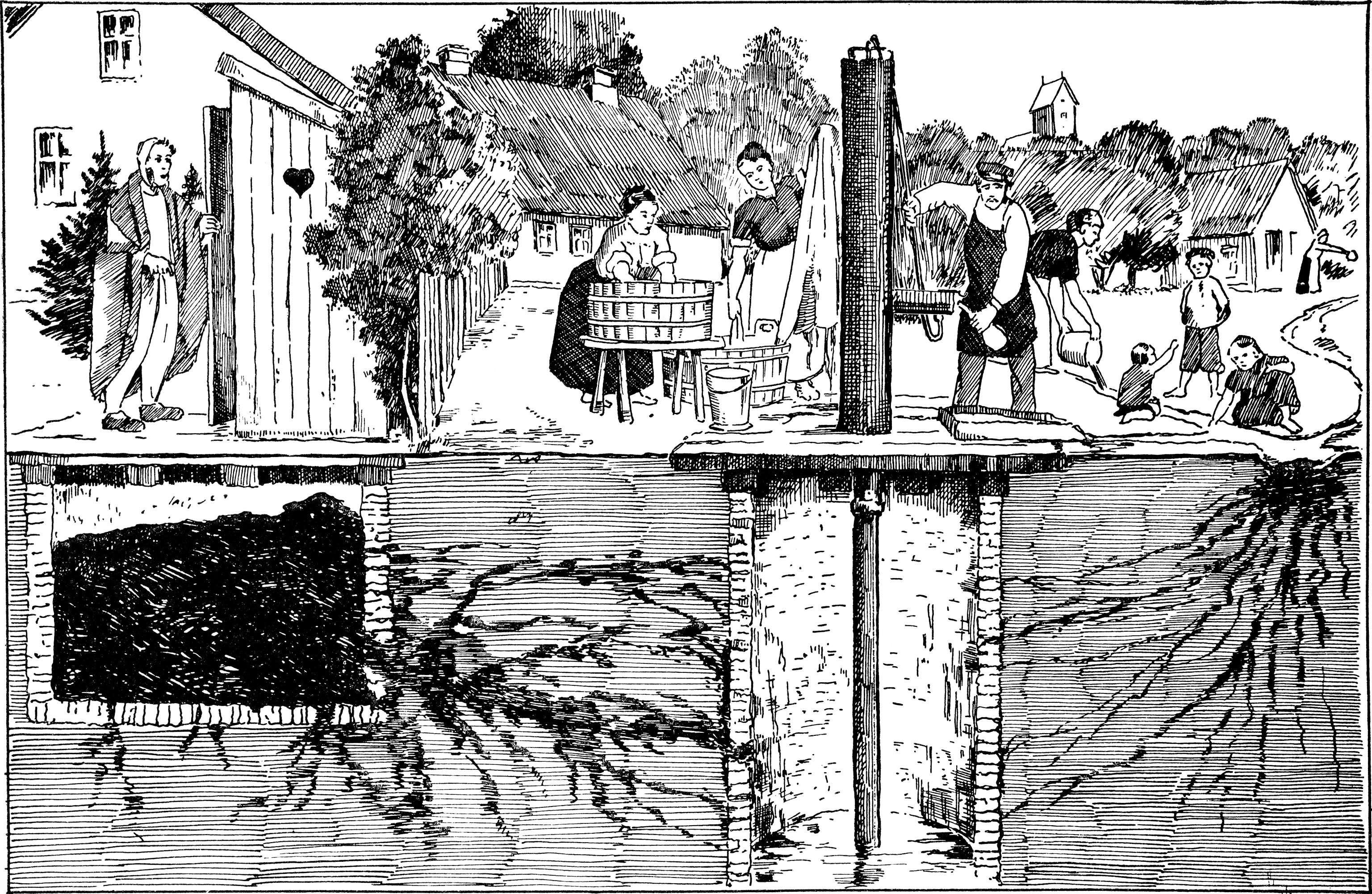|
Pagpag
Pagpag is the Tagalog language, Tagalog term for leftover food from restaurants (usually from fast food restaurants) scavenged from garbage sites and Landfill, dumps. Pagpag food can also be expired frozen meat, fish, or vegetables discarded by supermarkets and scavenged in garbage trucks where this expired food is collected. The word in the Tagalog language literally means "to shake off the dust or dirt", and refers to the act of shaking the dirt off of the edible portion of the leftovers. Pagpag can be eaten immediately after it is found or can be cooked in variety of ways. The act of eating pagpag arose from the challenges of hunger that resulted from extreme poverty in the Philippines. Selling pagpag was a profitable business in areas where poor people live. Pagpag is also called batchoy, which is derived from the batchoy, Filipino dish with the same name. Technically, batchoy is soup-based though the term batchoy that is used to refer to leftover food from trash may be a meal ... [...More Info...] [...Related Items...] OR: [Wikipedia] [Google] [Baidu] |
Philippine Cuisine
Filipino cuisine ( fil, lutong Pilipino/pagkaing Pilipino) is composed of the cuisines of more than a hundred distinct ethnolinguistic groups found throughout the Philippine archipelago. A majority of mainstream Filipino dishes that compose Filipino cuisine are from the food traditions of various ethnolinguistic groups and tribes of the archipelago, including the Ilocano, Pangasinan, Kapampangan, Tagalog, Bicolano, Visayan, Chavacano and Maranao ethnolinguistic groups. The styles of preparation and dishes associated with them have evolved over many centuries from a largely indigenous (largely Austronesian) base shared with maritime Southeast Asia with varied influences from Chinese, Spanish and American cuisines, in line with the major waves of influence that had enriched the cultures of the archipelago, as well as others adapted to indigenous ingredients and the local palate. [...More Info...] [...Related Items...] OR: [Wikipedia] [Google] [Baidu] |
Isko Moreno
Francisco Moreno Domagoso (born October 24, 1974), popularly known by his stage name Isko Moreno or Isko Moreno Domagoso (), is a Filipino politician and actor who previously served as the 27th mayor of Manila from 2019 to 2022. Before heading the capital city of the Philippines, he first gained notability as an actor and television personality. Born and raised in the slums of Tondo, Manila, Moreno spent his childhood in poverty and is widely known for his rags-to-riches story. After average success in show business, he entered politics in 1998, and ran for city councilor of Manila and was elected for three consecutive terms in topnotch victories. He then pursued higher education including some non-degree postgraduate education at Harvard Kennedy School and Oxford Saïd Business School. In 2007, he ran as vice mayor of Manila and was elected for three consecutive terms. In 2016, he was term-limited as vice mayor and unsuccessfully ran for senator in the 2016 senatorial elec ... [...More Info...] [...Related Items...] OR: [Wikipedia] [Google] [Baidu] |
Tagalog Language
Tagalog (, ; ; ''Baybayin'': ) is an Austronesian languages, Austronesian language spoken as a first language by the ethnic Tagalog people, who make up a quarter of the population of the Philippines, and as a second language by the majority. Its Standard language, standardized form, official language, officially named Filipino language, ''Filipino'', is the national language of the Philippines, and is one of two official languages, alongside Philippine English, English. Tagalog is closely related to other Philippine languages, such as the Bikol languages, Ilocano language, Ilocano, the Bisayan languages, Kapampangan language, Kapampangan, and Pangasinan language, Pangasinan, and more distantly to other Austronesian languages, such as the Formosan languages of Taiwan, Indonesian language, Indonesian, Malay language, Malay, Hawaiian language, Hawaiian, Māori language, Māori, and Malagasy language, Malagasy. Classification Tagalog is a Central Philippine languages, Central Phi ... [...More Info...] [...Related Items...] OR: [Wikipedia] [Google] [Baidu] |
Tondo, Manila
Tondo is a district located in Manila, Philippines. It is the largest in terms of area and population of Manila's sixteen districts, with a Census-estimated 631,313 people in 2015 and consists of two congressional districts. It is also the second most densely populated district in the city. Etymology The name Tondo can be derived from its Old Tagalog name, Tundun as inscribed in the Laguna Copperplate Inscription of 900 AD, the earliest native document found within the Philippines. Dutch anthropologist Antoon Postma, the first to translate the copperplate, believes the term ''tundun'' originated from the old Indian language Sanskrit, which was used alongside Old Malay as a language of politics and religion in the area at the time. Before this landmark discovery, several theories (however incorrect now) existed. Philippine National Artist Nick Joaquin once suggested that it might be a reference to a high ground ("tundok"). On the other hand, French linguist Jean-Paul Pote ... [...More Info...] [...Related Items...] OR: [Wikipedia] [Google] [Baidu] |
Benigno Aquino III
Benigno Simeon Cojuangco Aquino III (; February 8, 1960 – June 24, 2021), also known as Noynoy Aquino and colloquially as PNoy, was a Filipino politician who served as the 15th president of the Philippines from 2010 to 2016. The son of assassinated politician Benigno Aquino Jr. and 11th president Corazon Aquino, he was a fourth-generation politician as part of the Aquino family of Tarlac. Benigno Aquino III previously served as a member of the House of Representatives and Senate from 1998 to 2010, and also as a deputy speaker of the House of Representatives from 2004 to 2006. On September 9, 2009, shortly after the death of his mother, he announced his candidacy in the 2010 presidential election, which he eventually won. He was sworn into office as the 15th president of the Philippines on June 30, 2010, succeeding Gloria Macapagal Arroyo. [...More Info...] [...Related Items...] OR: [Wikipedia] [Google] [Baidu] |
President Of The Philippines
The president of the Philippines ( fil, Pangulo ng Pilipinas, sometimes referred to as ''Presidente ng Pilipinas'') is the head of state, head of government and chief executive of the Philippines. The president leads the executive branch of the Philippine government and is the commander-in-chief of the Armed Forces of the Philippines. The president is directly elected by the people, and is one of only two nationally elected executive officials, the other being the vice president of the Philippines. However, four vice presidents have assumed the presidency without having been elected to the office, by virtue of a president's intra-term death or resignation. Filipinos generally refer to their president as ''pangulo'' or ''presidente'' in their local language. The president is limited to a single six-year term. No one who has served more than four years of a presidential term is allowed to run or serve again. The current president of the Philippines is Bongbong Marcos, wh ... [...More Info...] [...Related Items...] OR: [Wikipedia] [Google] [Baidu] |
Philippine Statistics Authority
The Philippine Statistics Authority ( Filipino: ''Pangasiwaan ng Estadistika ng Pilipinas''), abbreviated as PSA, is the central statistical authority of the Philippine government that ''collects, compiles, analyzes and publishes statistical information on economic, social, demographic, political affairs and general affairs'' of the people of the Philippines and enforces the ''civil registration functions'' in the country. It is an attached agency of the National Economic and Development Authority (NEDA) for purposes of policy coordination. The PSA comprises the PSA Board and offices on sectoral statistics, censuses and technical coordination, civil registration, Philippine registry office, central support and field statistical services. The ''National Statistician'', who is appointed by the President of the Philippines from a list of nominees submitted by a Special Committee and endorsed by the PSA Board Chairperson, is the head of the PSA and has a rank equivalent to an Unde ... [...More Info...] [...Related Items...] OR: [Wikipedia] [Google] [Baidu] |
Cholera
Cholera is an infection of the small intestine by some strains of the bacterium '' Vibrio cholerae''. Symptoms may range from none, to mild, to severe. The classic symptom is large amounts of watery diarrhea that lasts a few days. Vomiting and muscle cramps may also occur. Diarrhea can be so severe that it leads within hours to severe dehydration and electrolyte imbalance. This may result in sunken eyes, cold skin, decreased skin elasticity, and wrinkling of the hands and feet. Dehydration can cause the skin to turn bluish. Symptoms start two hours to five days after exposure. Cholera is caused by a number of types of ''Vibrio cholerae'', with some types producing more severe disease than others. It is spread mostly by unsafe water and unsafe food that has been contaminated with human feces containing the bacteria. Undercooked shellfish is a common source. Humans are the only known host for the bacteria. Risk factors for the disease include poor sanitation, not enou ... [...More Info...] [...Related Items...] OR: [Wikipedia] [Google] [Baidu] |
Diarrhea
Diarrhea, also spelled diarrhoea, is the condition of having at least three loose, liquid, or watery bowel movements each day. It often lasts for a few days and can result in dehydration due to fluid loss. Signs of dehydration often begin with loss of the normal stretchiness of the skin and irritable behaviour. This can progress to decreased urination, loss of skin color, a fast heart rate, and a decrease in responsiveness as it becomes more severe. Loose but non-watery stools in babies who are exclusively breastfed, however, are normal. The most common cause is an infection of the intestines due to either a virus, bacterium, or parasite—a condition also known as gastroenteritis. These infections are often acquired from food or water that has been contaminated by feces, or directly from another person who is infected. The three types of diarrhea are: short duration watery diarrhea, short duration bloody diarrhea, and persistent diarrhea (lasting more than two wee ... [...More Info...] [...Related Items...] OR: [Wikipedia] [Google] [Baidu] |
Typhoid
Typhoid fever, also known as typhoid, is a disease caused by '' Salmonella'' serotype Typhi bacteria. Symptoms vary from mild to severe, and usually begin six to 30 days after exposure. Often there is a gradual onset of a high fever over several days. This is commonly accompanied by weakness, abdominal pain, constipation, headaches, and mild vomiting. Some people develop a skin rash with rose colored spots. In severe cases, people may experience confusion. Without treatment, symptoms may last weeks or months. Diarrhea may be severe, but is uncommon. Other people may carry the bacterium without being affected, but they are still able to spread the disease. Typhoid fever is a type of enteric fever, along with paratyphoid fever. ''S. enterica'' Typhi is believed to infect and replicate only within humans. Typhoid is caused by the bacterium ''Salmonella enterica'' subsp. ''enterica'' serovar Typhi growing in the intestines, peyers patches, mesenteric lymph nodes, spleen, liver, ... [...More Info...] [...Related Items...] OR: [Wikipedia] [Google] [Baidu] |
Hepatitis A
Hepatitis A is an infectious disease of the liver caused by ''Hepatovirus A'' (HAV); it is a type of viral hepatitis. Many cases have few or no symptoms, especially in the young. The time between infection and symptoms, in those who develop them, is 2–6 weeks. When symptoms occur, they typically last 8 weeks and may include nausea, vomiting, diarrhea, jaundice, fever, and abdominal pain. Around 10–15% of people experience a recurrence of symptoms during the 6 months after the initial infection. Acute liver failure may rarely occur, with this being more common in the elderly. It is usually spread by eating food or drinking water contaminated with infected feces. Undercooked or raw shellfish are relatively common sources. It may also be spread through close contact with an infectious person. While children often do not have symptoms when infected, they are still able to infect others. After a single infection, a person is immune for the rest of his or her life. Diagnosis re ... [...More Info...] [...Related Items...] OR: [Wikipedia] [Google] [Baidu] |
National Anti-Poverty Commission (Philippines)
The National Anti-Poverty Commission (NAPC) is a government agency of the Republic of the Philippines. It coordinates poverty reduction programs by national and local governments and ensures that marginalized sectors participate in government decision-making processes. NAPC was created by virtue of Republic Act 8425, otherwise known as the "Social Reform and Poverty Alleviation Act," which took effect on June 30, 1998. NAPC is one of the 12 agencies, formerly from the Office of the President which was placed under the supervision of the Cabinet Secretary, based on Executive Order No. 1 issued by President Rodrigo Duterte on July 4, 2016. On October 31, 2018, through Executive Order No. 67, the Commission along with the Presidential Commission for the Urban Poor and the National Commission on Indigenous Peoples were transferred from the supervision of the Office of the Cabinet Secretary to the Department of Social Welfare and Development. Mandate RA 8425 institutionalizes the ... [...More Info...] [...Related Items...] OR: [Wikipedia] [Google] [Baidu] |







